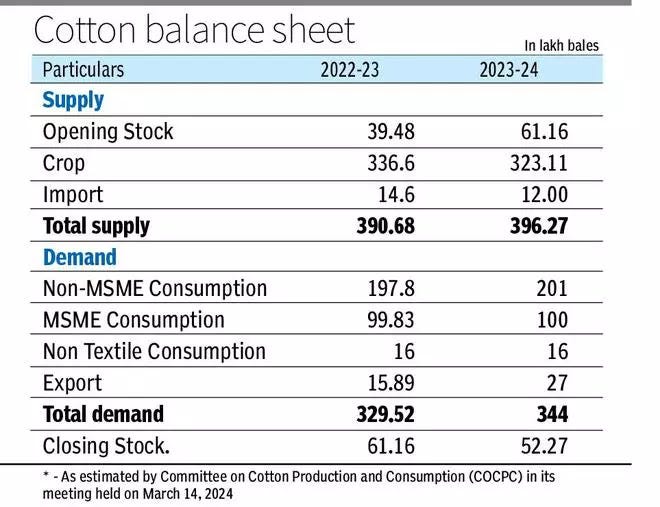Cotton Corporation of India revises down last season's production, ramps up imports
The Cotton Corporation of India (CCPC), has revised its estimates for the 2022-23 cotton season (October-September) downwards. The agency now pegs production at 336.60 lakh bales (of 170 kg each), a significant drop from the 343.47 lakh bales estimated earlier. This revision reflects potential shortfalls due to weather fluctuations or pest infestations during the growing season.
Imports on the rise
To bridge the gap between revised production figures and domestic demand, the CCPC has indicated an increase in cotton imports. This move comes despite a projected increase in production for the current season (2023-24) to 323.11 lakh bales. Industry experts believe the import surge is necessary to meet domestic demand from textile mills.
This move highlights India's growing dependence on foreign cotton sources. Industry Reacts with Caution. "The downward revision of last season's production highlights the need for close monitoring of crop health," says Santosh Mehta, President of the Indian Textille Mills Association (ITMA), in a statement. "While the projected increase for the current season is positive, imports will be crucial to ensure a steady flow of raw material for our textile industry."
Impact on prices and textile production
The increased reliance on imports could put upward pressure on cotton prices in India. "A rise in import volumes could lead to higher landed costs for cotton, potentially impacting yarn and fabric prices," warns Rajan Sharma, a cotton analyst based in Mumbai. "This, in turn, could affect the competitiveness of Indian textile exports."
However, textile industry representatives welcomed the decision to increase imports but expressed concerns about potential price fluctuations. "While increased imports are necessary in the short term, we urge the government to focus on long-term solutions to boost domestic cotton production," said Amit Saraogi, Chairman of the Gujarat Textile Mills Association. "Initiatives promoting better farming practices, improved irrigation facilities, and high-yielding seed varieties are crucial to ensure self-sufficiency in the long run."
The CCPC's revised estimates and import focus raise concerns about India's cotton sector. While imports will help meet current demand, a continued reliance on foreign sources could leave the domestic industry vulnerable to global price volatility. The government and industry stakeholders must work together to address yield issues and promote sustainable domestic production for long-term stability. The coming months will be crucial in observing how the CCPC manages imports and how the textile industry adjusts to the evolving cotton supply situation.

